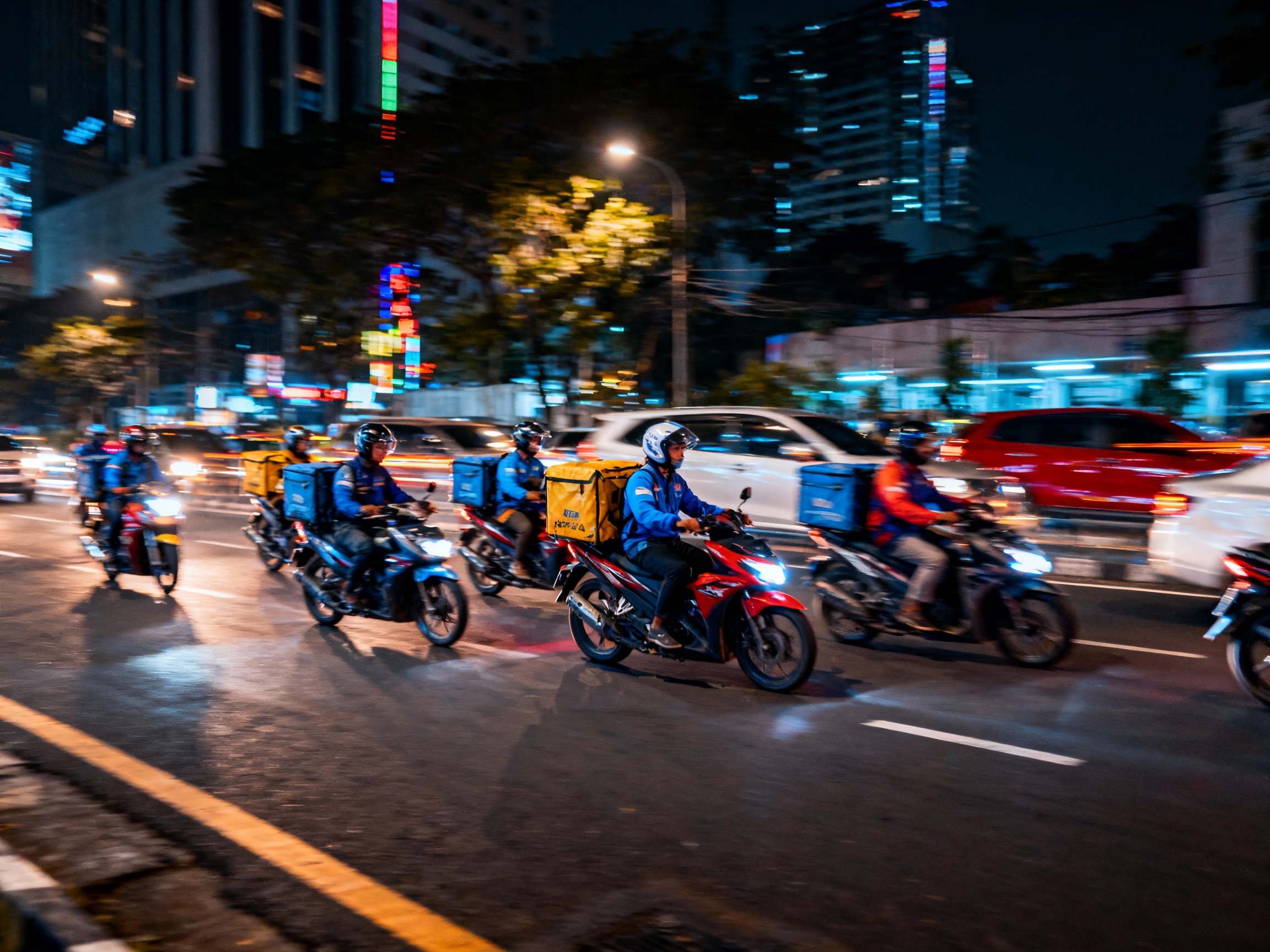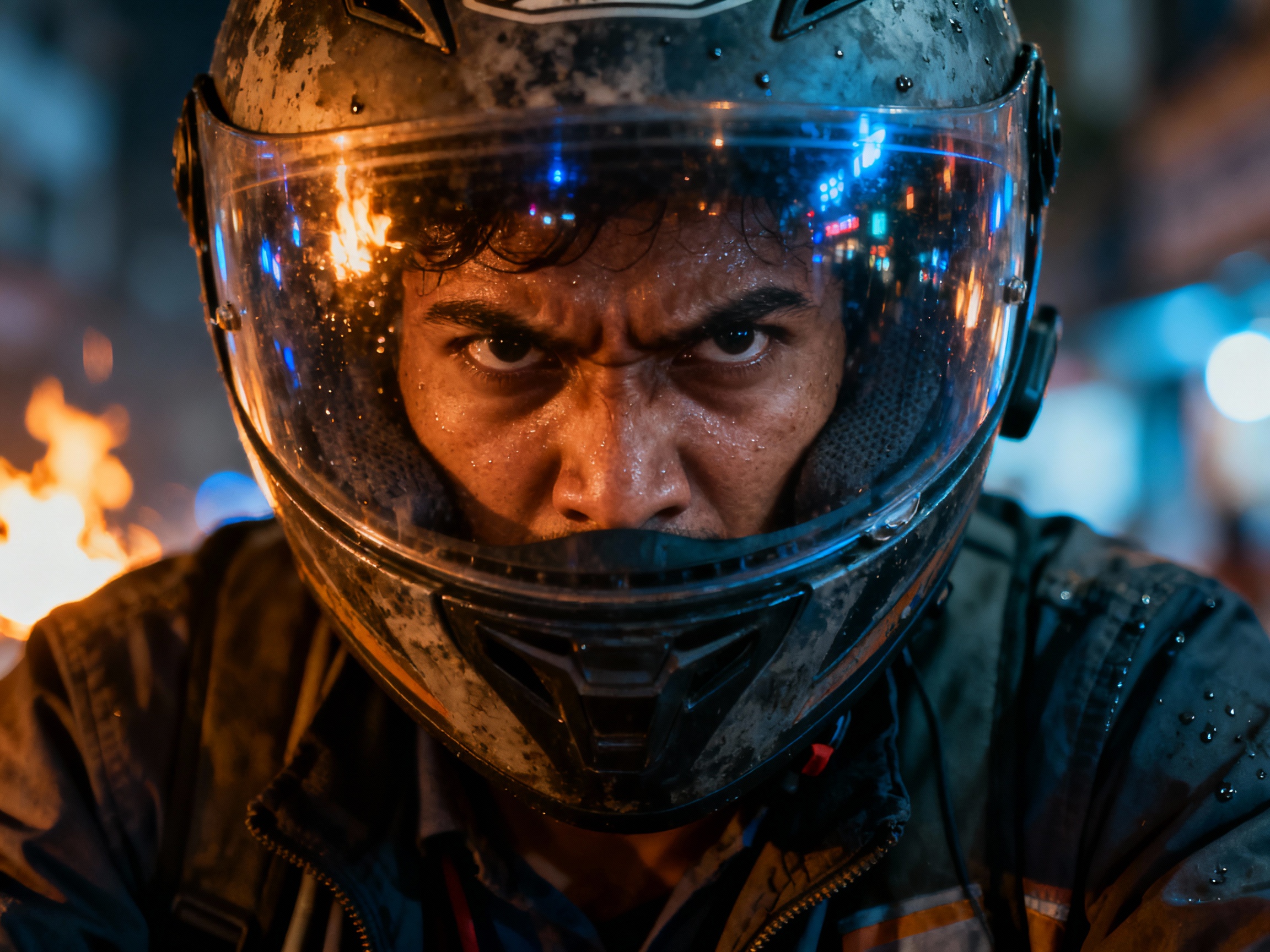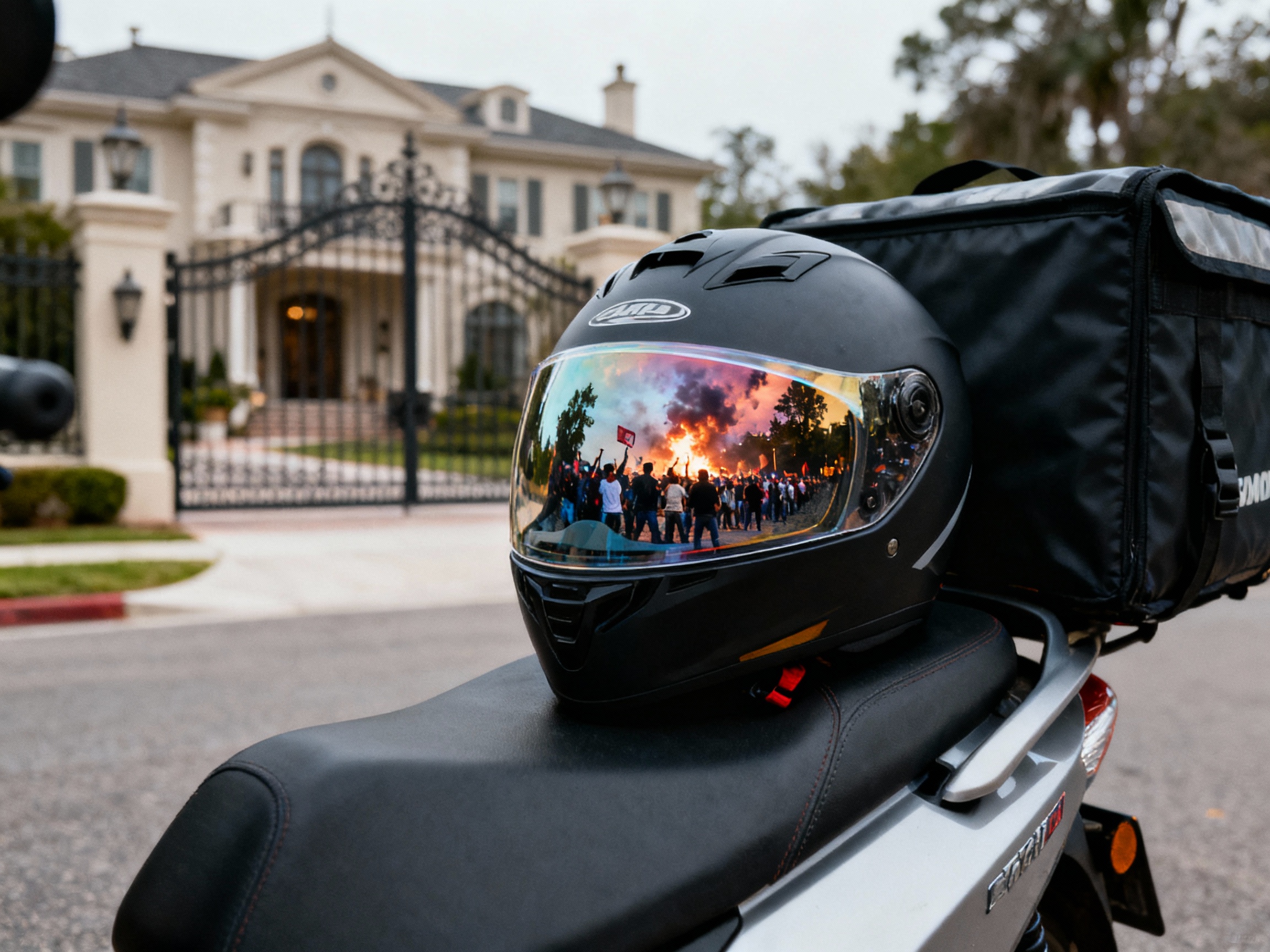
In myths, centaurs - half-human, half-horse - were wild, untamed creatures symbolizing the fury and power of nature. Today, new centaurs have appeared on the asphalt of metropolises: man and motorcycle have merged into one. And their fury is no longer mythological, but very real.
This thought came to me when I saw footage from Nepal and Indonesia. It wasn't just "people took to the streets." There was a specific, new social group at the forefront - motorcycle couriers. They didn't just join the crowd; they became its strategists, communicators, and striking force.
But why them? Why not students, not factory workers? The answer lies in the unique combination of their vulnerability and their strength.
The problem of countries: a boiling cauldron of injustice
Both Nepal and Indonesia, and many other countries are experiencing rapid but extremely uneven growth. This creates three layers of problems:
Monstrous inequality: Elites, fused with power, display provocative luxury (like those very mansions in Nepal) against a backdrop of total poverty. This is not just imbalance, it's a slap in the face to those barely making ends meet.
Corruption and nepotism: The system works not for development, but for the enrichment of the chosen few. The law does not protect but stifles the ordinary person.
Fragility of the economy: There are no stable social elevators, no confidence in tomorrow. The pandemic and crises hit the most vulnerable.
And it is precisely in the epicenter of this cauldron that the courier finds himself.

Anatomy of a courier: between despair and omnipotence
To understand their fury, you need to understand their life. It's a life on the edge of a chainsaw.
How do they survive?
Poverty and risk: This is not a romantic "side job for students." It's hard labor for pennies. No social guarantees, sick leave, pensions. They breathe exhaust fumes all day, risk their lives in traffic to earn food. They are the digital proletariat of the 21st century, a cog in the platform algorithm that always demands faster and cheaper.
Invisible: They are noticed only when an order is late. For the elites, they are part of the urban landscape, like a paver or a mailbox. Their uniform makes them anonymous, erased (for example, the killer of politician Parubiy in Ukraine dressed as a Glovo courier)
And why are they at the forefront? The paradox is that their vulnerability is their strength.
Tactical advantage: Their motorcycle is speed and mobility. They can instantly organize through Telegram chats, bypass police barriers, block key junctions, and disappear just as quickly. They turn their work tools into weapons of guerrilla warfare.
Deep digital and urban navigation: They know the city better than anyone. Not the parade avenues, but its "arteries and capillaries" - backyards, alleys, service entrances. This knowledge becomes a tactical map. In Nepal, it led protesters directly to the fences of corrupt officials.
Network organization: They have no single leader. Their strength is in horizontal connections. Their chats are the nervous system of the protest. You can arrest a person, but you can't arrest a network.
Nothing to lose: A person without stable work and social guarantees is least afraid of losing them. His fury is the fury of someone cornered. This makes him fearless.
In Indonesia, this manifested especially vividly. Protests against labor laws that cut already meager workers' rights were a matter of their own survival. They fought not for abstract ideals, but for the right to simply exist.
Their helmet is the perfect metaphor: it hides the face, giving anonymity, and protects the head, making them modern berserkers during protests. They are the avatars of popular anger.

Global phenomenon. A message delivered not in an envelope
The phenomenon of courier activists is not an accident in two countries. It is a symptom of a global disease and an indicator of a new form of resistance.
From Jakarta to Kathmandu, from São Paulo to Lagos - everywhere there is growing inequality, weak social institutions, and an army of young people cast aside by the "gig economy," such a scenario is possible.
What does this mean on a global scale?
The birth of a new class: The platform economy is not called the "sharing economy" for nothing. It has jointly spawned a new class of digital proletariat - mobile, connected, possessing unique skills and yet incredibly vulnerable. And this class is beginning to realize its power.
Tactics of the future: Spontaneous, yet well-organized through messengers, actions where the main thing is speed and mobility, not mass and prolonged sit-ins, may be the new model of street protest in the 21st century.
A harsh signal to the authorities: The story with couriers is a parable about what happens if the aspirations of the people are ignored. Authorities and elites use their services (food delivery, goods), but deny them dignity, fair pay, and the right to a voice. When the cup of patience overflows, these invisibles come out of the shadows and use their knowledge of the system against the system itself.
Their message is delivered not in an envelope, but burned onto the asphalt by their motorcycle tires: "We are the ones you didn't notice. We are the ones who feed your city. We know every corner of yours. And if you forgot about our existence, we will remind you at your gates."
This is not an apocalypse. This is the harsh reality where old hierarchies crumble under the pressure of new forces. And the riders of this new era are already here. Their engines are running, and their navigators are set to the addresses of those who thought their power was unshakable.

Leave a comment
Comment